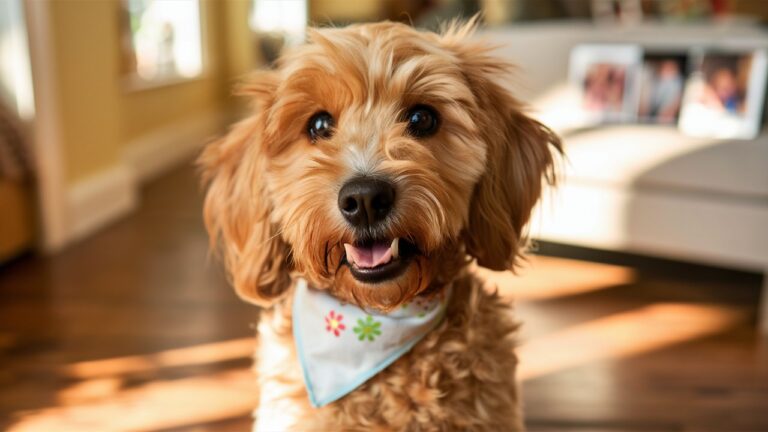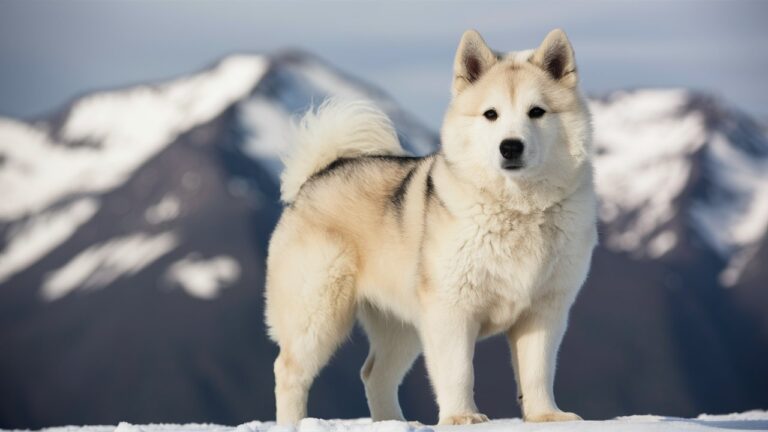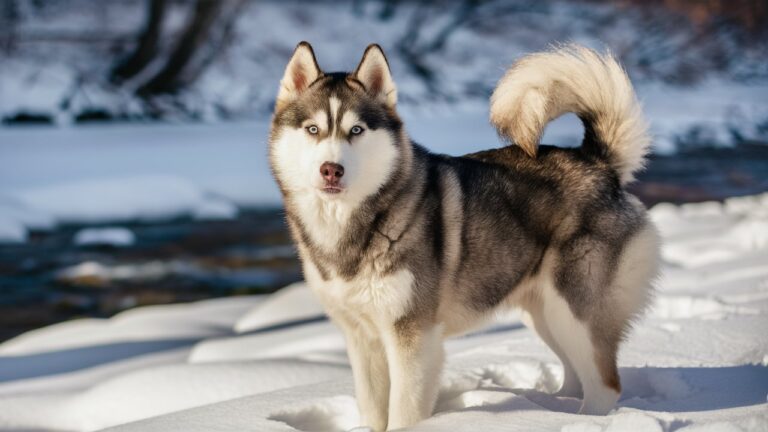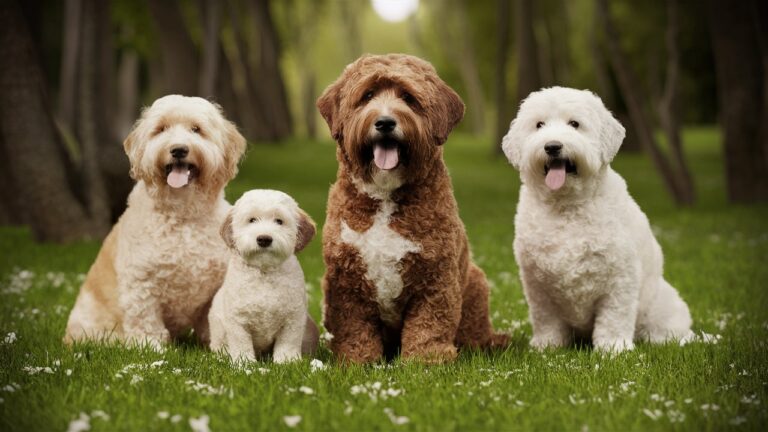Norwegian Lundehund: 100% Exploring a Remarkable Unique Breed
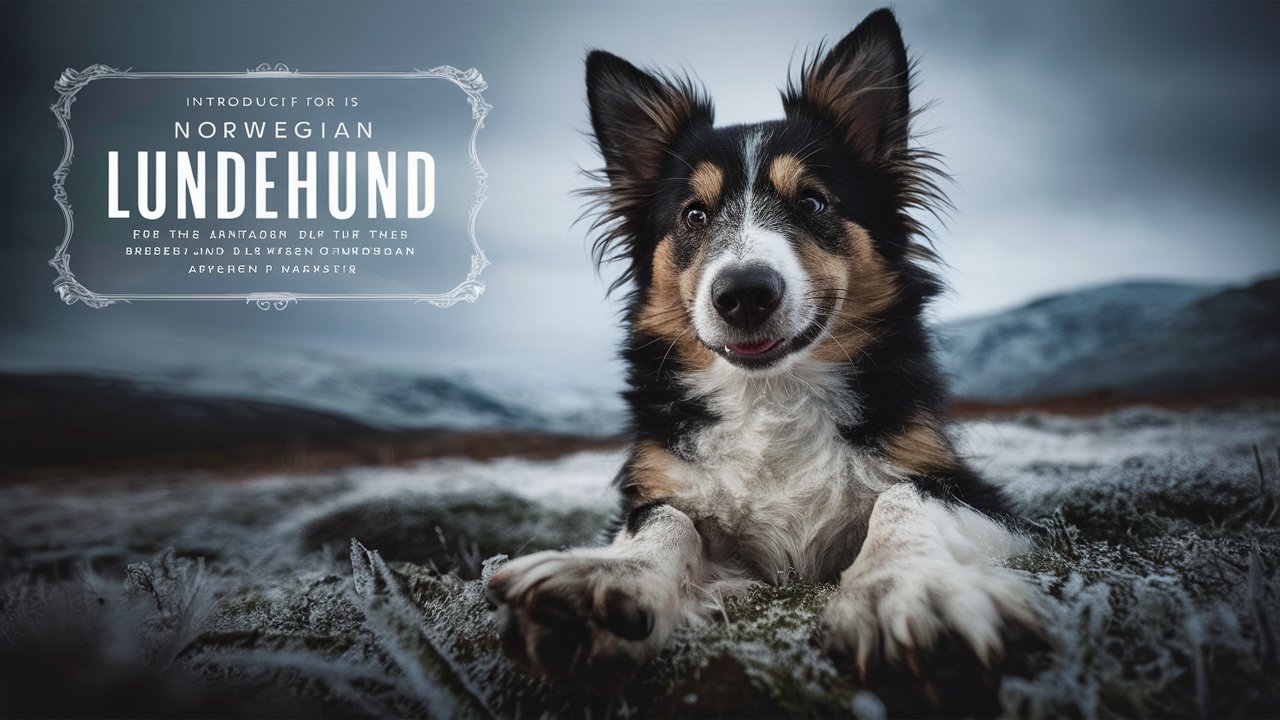
Nestled within the rugged landscapes of Norway, a remarkable canine companion emerges, boasting a history as intriguing as its physical characteristics. The Norwegian Lundehund, affectionately known as the “Puffin Dog,” stands out among dog breeds not only for its unique adaptations but also for its rich cultural significance and enduring charm.
Originating from the coastal regions of Norway, the Lundehund’s history is deeply intertwined with the livelihoods of Scandinavian fishermen and hunters. For centuries, these dogs were indispensable for their ability to navigate treacherous cliffs and rugged terrain with agility and precision. Their primary task was to hunt seabirds, particularly puffins, and retrieve their eggs—a role that required not only physical prowess but also intelligence and adaptability.
What sets the Norwegian Lundehund apart from other breeds is its distinctive physical features, shaped by centuries of selective breeding for its specialized hunting duties. Perhaps most striking are its polydactyl paws, boasting six fully functional toes on each foot. This unique trait enhances their grip on slippery surfaces, providing unparalleled stability during climbs and descents along steep cliffs. Furthermore, the Lundehund’s joints are exceptionally flexible, allowing it to bend its head backward to touch its spine and spread its legs outward at a 90-degree angle from the body—a trait that further enhances its agility and climbing abilities.
Beyond its physical adaptations, the Norwegian Lundehund is celebrated for its spirited temperament and unwavering loyalty. Despite its independent nature, the Lundehund forms deep bonds with its human companions, embodying a blend of curiosity, playfulness, and alertness that makes it an ideal family pet and a steadfast working partner.
As we delve deeper into the world of the Norwegian Lundehund, we uncover not just a breed of dog, but a living testament to the enduring relationship between humans and animals, shaped by centuries of collaboration, companionship, and mutual respect. Whether scaling cliffs in pursuit of seabirds or curling up at home with loved ones, the Norwegian Lundehund continues to captivate hearts and minds with its unique blend of history, adaptability, and charm.
Origins and History
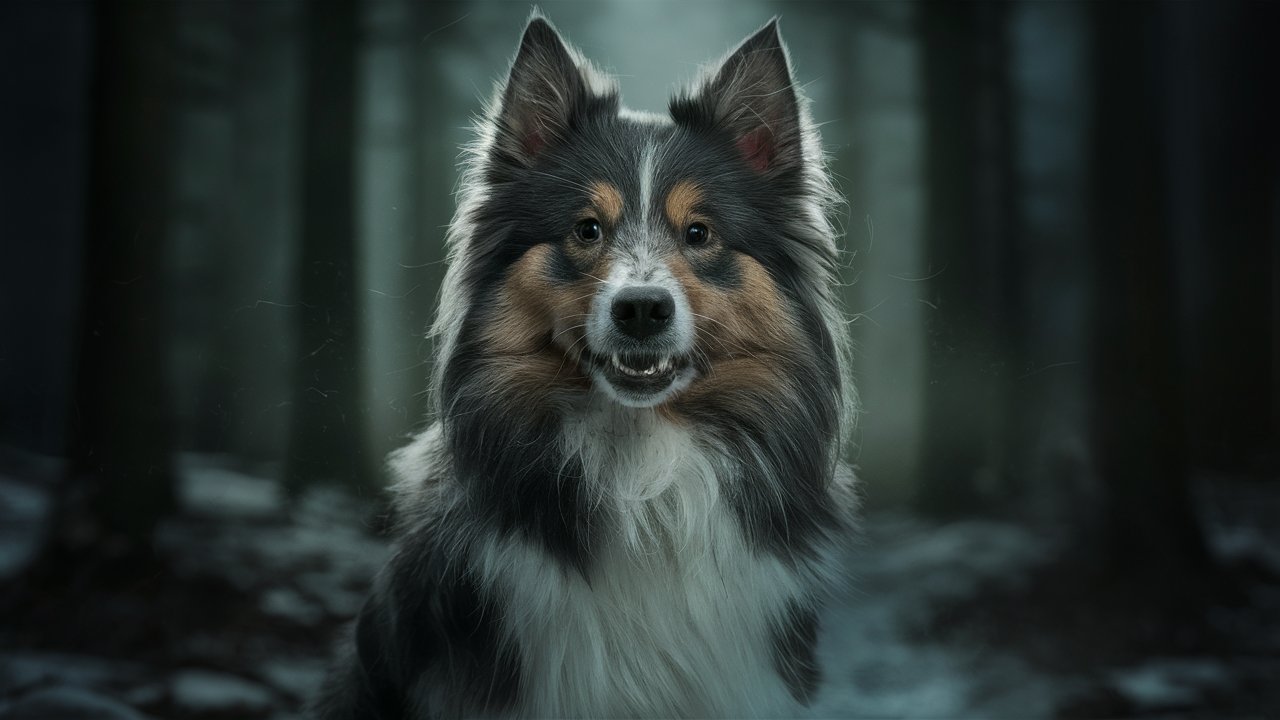
The Norwegian Lundehund’s origins are deeply intertwined with the coastal communities of Norway, where its unique abilities were essential for survival and sustenance. Here’s a closer look at how this extraordinary breed came to be and its historical significance:
1. Origins in Coastal Norway
The Norwegian Lundehund, also known as the Norsk Lundehund or Puffin Dog, originates from the remote islands and coastal regions of Norway. These areas, characterized by rugged cliffs and rocky terrain, were home to large colonies of seabirds, including puffins. The Lundehund’s primary role was to assist local fishermen and hunters in harvesting these birds and their eggs, which were valuable sources of food and feathers.
2. Specialized Hunting Skills
What sets the Norwegian Lundehund apart from other breeds is its specialized hunting skills. Its six-toed feet and extraordinary flexibility were not just quirks but adaptations honed over centuries of selective breeding. These features allowed Lundehunds to traverse narrow cliff ledges and crevices with ease, retrieving puffins from their nests nestled in hard-to-reach places. Their ability to fold their ears shut and their unique double-jointed necks enabled them to squeeze through tight spaces and avoid getting stuck during their perilous hunts.
3. Cultural Significance
Beyond their practical utility, Lundehunds held cultural significance within Norwegian communities. They were revered for their contributions to the local economy and for their loyalty and companionship to their owners. Stories and folklore often depicted them as courageous and resourceful, embodying the spirit of resilience required to thrive in Norway’s harsh coastal environments.
4. Near Extinction and Preservation
Despite their once-vital role, the Norwegian Lundehund faced near extinction in the mid-20th century. Changes in fishing practices and declining seabird populations reduced the need for Lundehunds, leading to a dramatic decline in their numbers. Fortunately, dedicated efforts by enthusiasts and breeders, particularly in Norway and later internationally, helped revive the breed. Today, the Norwegian Lundehund enjoys a small but dedicated following worldwide, appreciated for its unique attributes and historical significance.
5. Recognition and Conservation
The Norwegian Lundehund received recognition from the Norwegian Kennel Club in the early 20th century, acknowledging its distinct characteristics and heritage. Efforts to preserve the breed’s genetic diversity and health continue to be a priority among breeders, ensuring that future generations can experience the companionship and marvel at the Lundehund’s extraordinary abilities.
Physical Characteristics

The Norwegian Lundehund is a small to medium-sized dog with a distinctive appearance that reflects its unique adaptations and historical role as a puffin hunter along Norway’s rugged coastlines.
Body Structure and Size:
- The Lundehund typically stands between 12 to 16 inches tall at the shoulder, with a compact yet muscular build that belies its strength and agility. Despite its small stature, it is robust and well-proportioned, capable of navigating rough terrain with ease.
Distinctive Flexibility:
- One of the most remarkable features of the Norwegian Lundehund is its extraordinary flexibility. This breed has the ability to bend its head backward along its spine, a trait known as “cervical flexion,” which is uncommon among other dog breeds. This flexibility allowed Lundehunds to access narrow crevices and caves while hunting puffins, showcasing their adaptability to challenging environments.
Polydactylism:
- Perhaps the most visually striking characteristic of the Lundehund is its polydactylism—having six fully functional toes on each foot. This additional digit, often likened to a thumb, provides enhanced grip and stability on slippery surfaces such as rocky cliffs. The extra toes are also equipped with strong muscles and tendons, enabling the Lundehund to maintain balance and agility during complex maneuvers.
Ears and Tail:
- The Lundehund’s ears are erect and mobile, capable of folding closed to protect against debris and water while navigating cliffs and caves. This feature not only enhances its hearing but also shields its ears from potential injuries during hunting expeditions.
- The tail of the Norwegian Lundehund is bushy and carried curled over the back or to either side. This tail carriage, along with its overall alert posture, reflects the breed’s inherent curiosity and readiness to spring into action.
Musculature and Movement:
- Despite its unique anatomical features, the Lundehund possesses a well-developed musculature that supports its agile movements. Its limbs are sturdy and articulated, facilitating nimble footwork and swift changes in direction—essential traits for navigating rocky terrain and steep cliffs.
Coat and Coloration:
- The Norwegian Lundehund sports a dense, double-layered coat that provides insulation against Norway’s harsh climate. The outer coat is smooth and weather-resistant, while the undercoat offers additional warmth and protection. Coat colors vary and may include combinations of white, reddish-brown, and black, often with distinctive markings and patterns.
Overall Impression:
- When observed as a whole, the Norwegian Lundehund presents a unique and captivating appearance that reflects its historical role and evolutionary adaptations. Its flexibility, polydactylism, and compact yet sturdy build are testament to centuries of selective breeding for specific hunting and survival skills in Norway’s coastal landscapes.
Temperament and Behavior
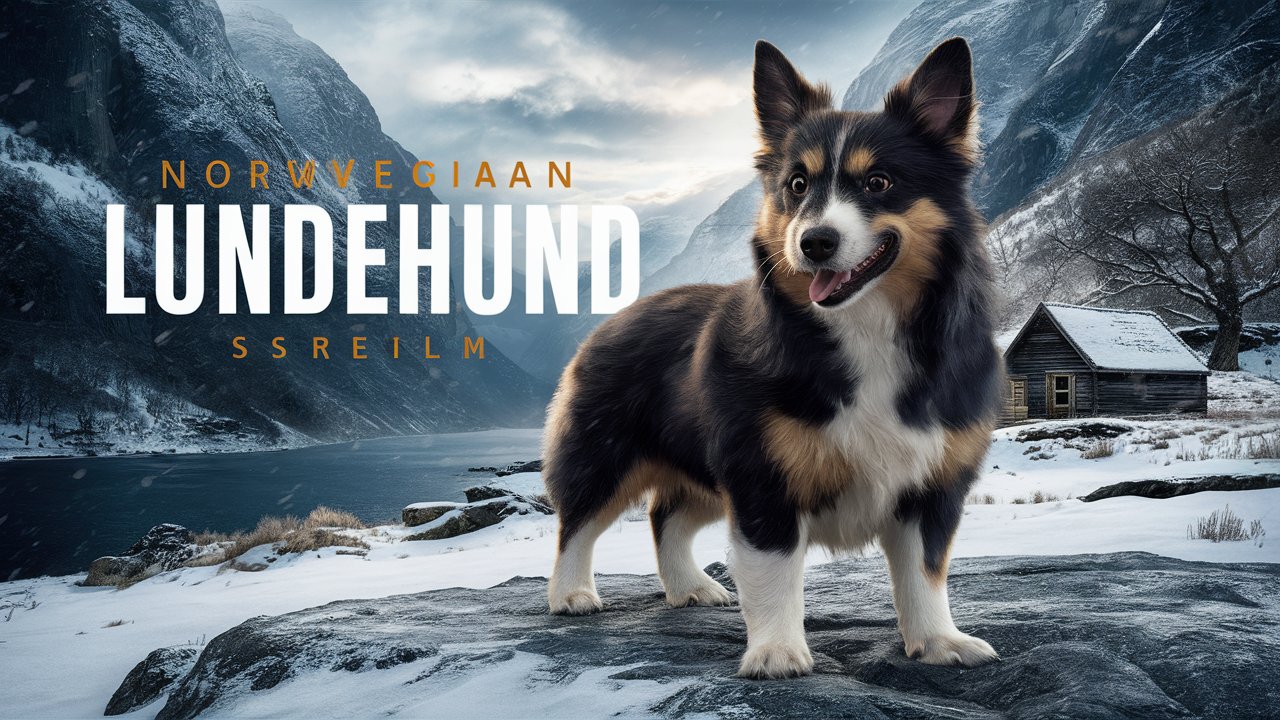
The Norwegian Lundehund is renowned not only for its unique physical characteristics but also for its distinctive temperament that sets it apart from other breeds. Understanding these traits is crucial for prospective owners to appreciate the Lundehund’s personality and ensure a harmonious relationship.
Curiosity and Playfulness
From an early age, Norwegian Lundehunds exhibit a curious and adventurous spirit. Shaped by their history as seabird hunters, they possess an innate drive to explore and investigate their surroundings. This curiosity often manifests in their playfulness, as they enjoy engaging in interactive games and exploring new environments. Their agility and nimbleness enable them to navigate obstacles with ease, making playtime an enriching experience for both dog and owner.
Independence and Bonding
While Lundehunds are independent thinkers, they form strong bonds with their families. They are known for their loyalty and affection towards their human companions, often developing a special bond with one primary caregiver. This loyalty extends to protective instincts, as Lundehunds are naturally vigilant and alert, making them excellent watchdogs despite their friendly disposition.
Adaptability
Due to their history as working dogs in harsh coastal environments, Norwegian Lundehunds are highly adaptable. They thrive in active households where they can participate in various activities that stimulate their minds and bodies. Their adaptable nature allows them to excel in agility training, obedience competitions, and even scent work, showcasing their versatility beyond their historical role as puffin hunters.
Socialization and Training
Early socialization is crucial for Norwegian Lundehunds to ensure they grow into well-adjusted adults. Exposing them to different people, animals, and environments from a young age helps curb any potential timidity or overprotectiveness. Positive reinforcement training methods work best with Lundehunds, as they respond well to praise and rewards. Their intelligence and eagerness to please make them quick learners, although they may display a stubborn streak at times, requiring patience and consistency in training.
Family Life
As family pets, Norwegian Lundehunds thrive in households that appreciate their unique traits and provide ample opportunities for physical and mental stimulation. They enjoy being included in family activities and are particularly fond of children when properly introduced and supervised. Their playful nature makes them excellent companions for active individuals or families who enjoy outdoor adventures and engaging in canine sports.
Health Considerations

The Norwegian Lundehund, known for its unique physical traits and historical role as a seabird hunter, boasts generally good health. However, like all breeds, it is important for potential owners to be aware of specific health considerations that may affect these remarkable dogs.
1. Musculoskeletal Issues:
One of the most notable aspects of the Lundehund’s anatomy is its unusual flexibility and polydactylism (extra toes). While these adaptations are advantageous for their original hunting purposes, they can also predispose the Lundehund to certain musculoskeletal issues.
- Shoulder Dysplasia: Due to their ability to stretch their forelegs outward, Lundehunds may be prone to shoulder dysplasia, a condition where the shoulder joint doesn’t develop properly, leading to discomfort and reduced mobility.
- Elbow Dysplasia: Similarly, the flexibility in their front limbs can contribute to elbow dysplasia, a degenerative condition affecting the elbow joint’s development and function.
Regular veterinary check-ups are crucial to monitor these conditions, especially as the Lundehund ages. Early detection allows for proactive management through appropriate exercise regimes, joint supplements, and, in some cases, surgical intervention to maintain mobility and quality of life.
2. Gastrointestinal Sensitivities:
Another health consideration for Norwegian Lundehunds revolves around their digestive system. Historically, these dogs subsisted on a diet primarily composed of fish and seabirds. As a result, their digestive tracts may be sensitive to certain foods or dietary changes. Owners should be attentive to their Lundehund’s diet, opting for high-quality, easily digestible food tailored to their nutritional needs.
3. Lundehund Syndrome:
Lundehund Syndrome is a collection of gastrointestinal issues that can affect the breed. This syndrome includes symptoms like diarrhea, vomiting, and difficulty digesting certain foods. It’s important for owners to work closely with their veterinarian to manage and minimize these symptoms through appropriate diet and medications.
4. Allergies:
Like many breeds, Norwegian Lundehunds can be prone to allergies, which may manifest as skin irritations, itching, or ear infections. Identifying and addressing potential allergens, such as certain foods or environmental factors, can help alleviate these issues and improve the dog’s comfort.
5. Eye Conditions:
While not as prevalent as in some other breeds, Norwegian Lundehunds can occasionally be affected by eye conditions such as cataracts or progressive retinal atrophy (PRA). Regular eye examinations by a veterinary ophthalmologist can help detect these conditions early, enabling prompt treatment and management to preserve vision.
Living with a Norwegian Lundehund
Welcoming a Norwegian Lundehund into your home is embarking on a journey with a unique and spirited companion. Understanding their distinctive traits and needs is crucial to ensuring a harmonious relationship and fulfilling their potential as a beloved family member.
Activity Requirements
Norwegian Lundehunds are an active breed, thanks to their history as agile hunters along coastal cliffs. They thrive on regular exercise that challenges both their physical abilities and mental acuity. Engaging in activities such as hiking, agility training, or interactive play sessions not only meets their exercise needs but also taps into their natural intelligence and problem-solving skills.
Training and Socialization
Due to their independent nature and strong prey drive, early socialization and consistent training are essential for Norwegian Lundehunds. Exposing them to various environments, people, and animals from a young age helps them develop into well-rounded adults. Positive reinforcement techniques work best with this breed, as they respond well to rewards and praise for desired behaviors.
Grooming
The Norwegian Lundehund’s double coat is weather-resistant and requires moderate grooming. Regular brushing helps to maintain their coat’s health and minimize shedding, which is typically moderate throughout the year with seasonal increases. Paying attention to their ears, which can be prone to wax buildup, and trimming their nails regularly contributes to their overall comfort and health.
Home Environment
Despite their active nature, Norwegian Lundehunds adapt well to apartment living if provided with sufficient exercise and mental stimulation. They appreciate having a safe space indoors to retreat to and enjoy spending time with their families. Due to their history as independent thinkers, they may display a stubborn streak at times, requiring patience and consistency in training.
Health Considerations
While generally healthy, Norwegian Lundehunds may be prone to certain genetic conditions like gastrointestinal issues and joint problems. Regular veterinary check-ups, maintaining a healthy diet, and monitoring their weight can help mitigate these risks. Responsible breeding practices aimed at reducing hereditary conditions contribute to the overall health and longevity of the breed.
Companionship and Bonding
Above all, Norwegian Lundehunds are known for their strong bonds with their families. They thrive on companionship and enjoy participating in family activities. Their affectionate and loyal nature makes them excellent companions for individuals and families alike, provided they receive the attention and interaction they crave.
Conclusion
The Norwegian Lundehund represents more than just a unique breed of dog; it embodies a rich tapestry of history, adaptation, and companionship. Originating from the coastal regions of Norway, where its agility and flexibility were honed through centuries of hunting puffins, the Lundehund’s physical traits tell a story of specialized evolution. Its six toes per foot and extraordinary joint flexibility enable feats of agility unmatched in the canine world, reflecting its deep-rooted connection to its ancestral role.
Beyond its physical prowess, the Lundehund is cherished for its endearing temperament and intelligence. Known for their independent streak yet unwavering loyalty to their families, Lundehunds forge strong bonds with those who appreciate their spirited nature. Whether navigating rocky cliffs or playing in the backyard, these dogs exhibit a zest for life that captivates everyone they encounter.
For prospective owners, embracing a Norwegian Lundehund means welcoming a companion with unique needs and characteristics. Their active lifestyle demands regular exercise and mental stimulation, activities that resonate with their historical purpose and keep them content and healthy. Early socialization and consistent training foster well-rounded individuals, ensuring they thrive in diverse environments and embody the best traits of their breed.
In essence, the Norwegian Lundehund symbolizes resilience, adaptability, and the enduring partnership between humans and dogs. From their humble beginnings as seabird hunters to their role as beloved family members, Lundehunds leave an indelible mark on the hearts of those fortunate enough to share their lives. Their story is a testament to the profound bond that transcends species, uniting us in appreciation for the remarkable diversity of life on Earth.
Owning a Norwegian Lundehund is not merely adopting a pet but embracing a living link to history, a companion whose presence enriches every moment with their unique charm and boundless energy. As we celebrate their heritage and embrace their future, the Norwegian Lundehund continues to captivate and inspire, ensuring its place as a treasured member of the global canine community.
